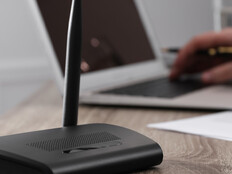Wi-Fi 7 promises improvements that could usher in major changes to the day-to-day operations of businesses across industries and sectors, and state and local agencies are no exception. That said, Wi-Fi 6E technology and networks will remain dominant in today’s tech landscape, with an estimated 2.5 billion Wi-Fi 6 devices having been shipped in 2022. Still, state and local agencies would benefit from taking stock of what’s down the road.
Where do things stand now that Wi-Fi 7 is certified? What do organizations need to get the new standard up and running, and how widely available is Wi-Fi 7 service? How will it impact hybrid and remote work environments?
Wi-Fi 6 Will Continue to Grow as Organizations Look Ahead to Wi-Fi 7
The Wi-Fi Alliance reports that more than 230 million Wi-Fi 7 devices will be on the market in 2024; by 2028, that number will be about 2.1 billion. Wi-Fi 6 devices already number more than 2 billion, and Wi-Fi 6 shipments are expected to surpass 5 billion by 2025. The devices that will adopt Wi-Fi 7 the earliest will be smartphones, PCs, tablets and access points, according to the alliance. Some Wi-Fi 7 devices have yet to be certified, The New York Times reports, though more certifications are expected throughout Q1 2024.
EXPLORE: Fort Worth’s public Wi-Fi initiative gets people online.
According to Wired, support for Wi-Fi 7 will be “scarce”: “Wi-Fi 7 devices and routers began rolling out early in 2023, [but] you won’t feel the benefit of a Wi-Fi 7 router until you have Wi-Fi 7 devices.”
“You might be tempted to point out that Wi-Fi 7 routers already exist, and you’d be right. Routers have already hit the market from companies like Netgear,” notes The Verge. “They may or may not get certification. … That doesn’t mean they won’t work well with Wi-Fi 7 devices in the future, but certification allows companies to guarantee that they will.”
When Wi-Fi 7 becomes the most ubiquitous, practical networking option, the Wi-Fi Alliance expects that its improved performance will make hybrid work environments more reliable. That makes sense, given the expected performance boost that Wi-Fi 7 provides and because Wi-Fi 7 supports multi-link operation, which lets smartphones and computers connect via multiple Wi-Fi frequencies simultaneously.











